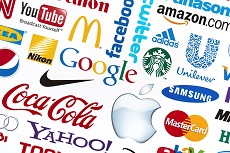When many people think about trademarks, they think of those belonging to large businesses. Trademarks like Nike, McDonald’s, Coca-Cola, and Mercedes-Benz are owned by corporations that spend tens of millions just on their brands. But all businesses can and should take proactive steps to protect their brands and avoid the more expensive, nearly inevitable, alternative.
At the most basic level, a trademark refers to any word, name, symbol, or device, or any combination used to identify and distinguish your goods from those manufactured or sold by others and to indicate the source of your goods. Because their purpose is to tell consumers where a product or service comes from, trademarks are extremely valuable even to smaller businesses. They represent the hard work you put into building a good reputation.
Still, in view of the huge sums of money that large businesses spend on their branding, you may feel that an investment into your brand trademark is not realistic. Or you may feel that with so much on your plate you don’t have time to start. Let’s take a deep breath. While you could spend millions like McDonald’s, Nike, or Disney, that kind of investment is probably not necessary at your stage. Moreover, with the right plan in place, effectively protecting your brand doesn’t have to consume your time. The following three simple tips are affordable to implement, will improve the strength and security of your brand, and will help you avoid large, unnecessary, legal expenses in the future.
Choose a good trademark. One of the most common challenges in trademark registration and litigation is trying to protect a mark that does not effectively distinguish the desired products or services. In trademark law there are five categories of trademark strength. The first and strongest category is “fanciful.” Fanciful marks are made-up terms or words. Because these marks consist of made-up words, they can be associated exclusively with your products. The second category is “arbitrary.” Arbitrary marks are not made-up words, but because they have no inherent relationship to the products or services for which they are used, they can have great strength in causing consumers to identify the source of those products or services. The third category is “suggestive.” Suggestive marks, as the name implies, give consumers an idea of the product or service, but fall short of making it obvious. Suggestive marks can still be registered and protected trademarks, but are not as strong as fanciful or arbitrary marks. The fourth category is “descriptive.” Trademarks in the descriptive category, are considered weak, and can only be registered and/or protected with proof that consumers associate the mark with your products. As the fourth category is weak, adopting descriptive marks is discouraged. The last category is generic. Generic terms can never be registered as trademark. For example, you would register term “grass” as a trademark for a business selling grass. Generic terms are reserved for all businesses to use.
